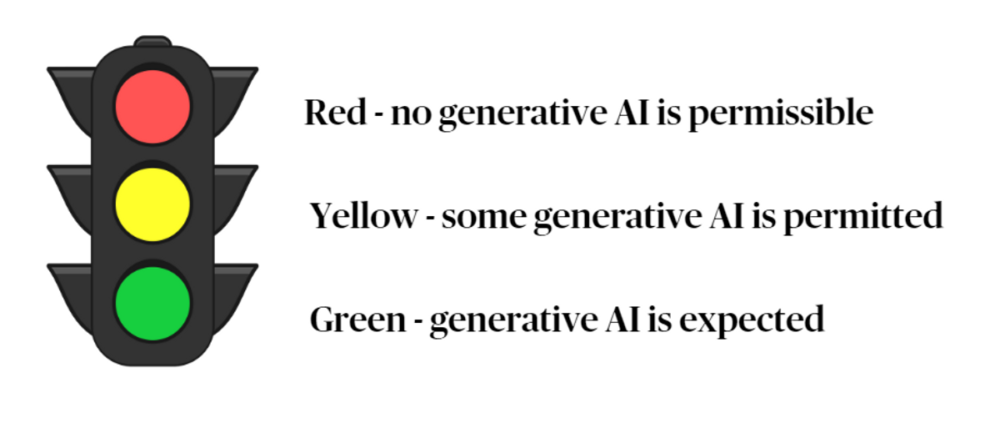Our Response to Artificial Intelligence
Late last year, a form of artificial intelligence (AI) was released to the world called ChatGPT. This type of technology has been developing for some time, however this specific platform quickly captured millions of people in and outside the tech world. It is a form of 'generative AI' and has the ability to use verbal reasoning and communicate in a 'human-like' manner. At Emmaus, we see technology like ChatGPT both as a challenge to our educational practice, but also as an opportunity.
It has been interesting observing how different educational systems have initially responded to generative AI. Most of the states across Australia attempted to ban this technology for student use. The South Australian Education Department decided to instead, let students have free access during school since the beginning of the year. As an independent school, our College has had the liberty to choose our response. We decided initially to keep students from being able to access digital applications such as ChatGPT while they were using the College’s IT network. We wanted to use discernment in our response, to investigate the potential challenges and opportunities that this emerging technology could bring to the teaching and learning process, while also identifying any risks that could occur when new software is released so quickly. Over the past six months, our school leadership, in conjunction with our teachers have been developing a structured approach to how we are going to respond to Generative AI. We want to ensure we can continue to uphold academic integrity and rigour across the assignments we have our students undertake in their learning. To help students know the expectations of each of the assessment tasks they are given, we are moving toward a traffic light system (Red, Yellow, and Green) to categorise how much AI can potentially be used in a specific assignment.
Red Tasks are assessments that attempt to measure foundational knowledge and skills your child needs to grasp when progressing in learning a subject. Using Generative AI on these tasks could distort the validity of the assessment. Just like we'd be cautious about students completing a maths test at home, due to potential outside help, AI poses a similar concern with many language-rich assignments. Hence, a Red Task will require an assessment to be completed in controlled, supervised conditions at school. Red Tasks can sometimes also be completed as oral reports or in-person interviews with a teacher to confirm that genuine understanding and proficiency can be demonstrated by an individual student. Not every assignment will be 'red', but this assessment type will be used in most language-rich subjects.
Yellow Tasks are typical assignments that we set for homework. Students are given a period of time to brainstorm, research, develop their thinking and complete a polished finished product. Moving forward, rather than attempt to block AI from students for these tasks, Year 7-12 teachers at Emmaus will help guide their students to know when and how to appropriately use Generative AI in Yellow Tasks. For example, teachers can tolerate their students in using AI-enhanced programs like Grammarly to help bring further clarity to their writing, when spelling and grammar isn’t the chief concern of the assessment. ChatGPT could also help students condense their word count or provide them with inspiration in brainstorming when a teacher is assessing other important skills. However, just like driving through a traffic intersection, the yellow light causes most ambiguity. Should I continue to accelerate through? Or should I stop? A student will need to use self-regulation with yellow tasks and consider their use of AI carefully, asking themselves "am I using this technology too much?" This is why we still need Red Tasks to help ensure that students cannot be overly reliant on a machine’s “thinking”.
Green Tasks signal that generative AI is not just tolerated, but expected. This is when we will want Middle and Senior School students to fully embrace the capabilities of AI (in age-appropriate ways). We want to provide opportunities for students to practice utilising AI tools to enhance their creative productivity. We would need to raise our expectations here because if a student can leverage the technology's full potential, in theory, they ought to be able to produce something of higher quality compared to previous generations. These types of tasks won’t be introduced immediately, as our teachers will need time to professionally engage with the technology to ensure the educational value of such tasks can be justified.
As we move forward, all three 'colours' or category of tasks, will be vital as we aim for a balanced response to AI technology such as ChatGPT. Each task type will have a unique purpose in your child's education. Teachers will still hold students accountable if they mindlessly copy and paste information from ChatGPT into a Yellow Task. However, Red Tasks will ensure students who may become over-reliant in using this technology, will still need to do their own thinking without the help of artificial intelligence. Green Tasks will have exciting potential as teachers start exploring these opportunities, however, it is important to note, this technology will never distract us from the timeless value of human interaction. I believe a Christian education can discerningly embrace new technologies, however, most of what we consider important at Emmaus Christian College does not include these technologies. Rather, our purpose of education at Emmaus is for students to Belong in community; Flourish into their unique identities found in Christ; Think deeply and discerningly about the world God has created; and Respond to the call, we believe He has placed on their lives. This purpose is grounded in the idea that Jesus Christ is Lord.
If you have any questions about our response to AI at Emmaus, please contact Adrian Cotterell, Director of Studies (ELC-12).

